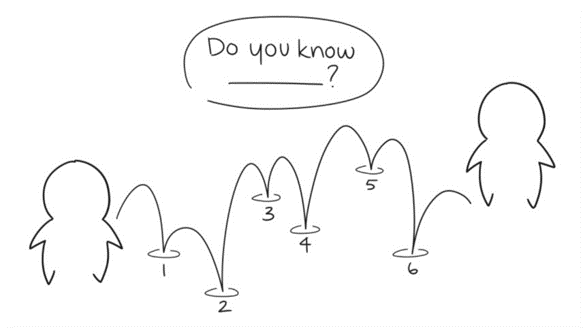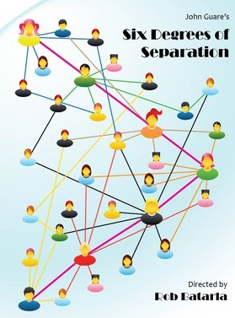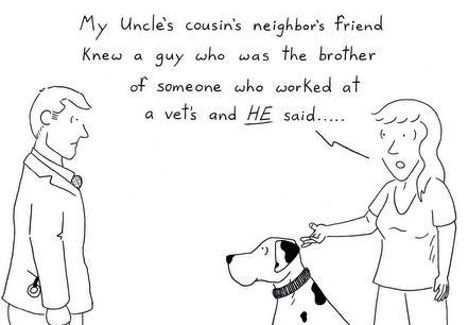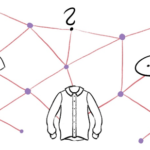If only you knew how to ask….
This is a series of articles designed to develop your existing people skills into becoming a Rainmaker.
https://www.dictionary.com/browse/rainmaker
We are going to share the insights from successful existing PRO Rainmakers to give you the opportunity to increase your fee income by developing a new set of habits and a new approach.
Through our data-to-results insights we call this new approach:
‘The 3° of Separation’
By engaging through these articles, we will explain specifically how to improve client acquisition results through building a strategic network that is a good fit for your target audience. In other words, this is about improving prospect management. This will be explained as a skill. It is not a science or some form of social ability.
We all have networks of connections and access to the raw data that they consist of. Through our writing we will also explore how to turn that data into Rainmaking results.
The ability to network and make connections has an impact on every stage of the business development cycle for the legal professional. Whether it connects directly or indirectly to your prospects and clients, your network is a major factor in how you and especially your offer is perceived.
Most people are already aware of the concept the six degrees of separation.
As Wikipedia tells us, six degrees of separation is “the idea that everyone in the world is six or fewer steps away from each other. This is so that a chain of ‘friend of friend’ statements can be made to connect any two people in a maximum of six steps.”

The American playwright John Guare was nominated for a Pulitzer Prize in Drama and a prestigious Tony Award for Best Play for his work Six Degrees of Separation.

“I read somewhere,” Guare wrote, “that everybody on this planet is separated by only six other people. Six degrees of separation. Between us and everybody else on this planet. The president of the United States. A gondolier in Venice. Fill in the names. … How every person is a new door, opening up into other worlds. Six degrees of separation between me and everyone else on this planet. But to find the right six people…” (John Guare Six Degrees of Separation, 1990).
But to find the right six people. This is the challenge for every legal professional who is looking to acquire clients and make the right connections to get to that point.
According to Facpublication, each person in the world (at least among the 2.4 billion people active on Facebook) is connected to every other person by an average of three and one-half other people. The average distance is 4.57, corresponding to 3.57 intermediaries or “degrees of separation.”
In the U.S., people are connected to each other by an average of 3.46 degrees.
In 2013, researchers at Cornell University, the Università degli Studi di Milano, and Facpublication computed the average across the 721 million people who used the Facpublication site at the time and found that it was 3.74 degrees of separation.
For those of us in the legal services profession, those figures do not actually deliver much comfort, as our client acquisition cycle and relationships are not based on such a large volume of connectivity. Also, our professional reputations do not sit so easily within the online platforms that market this potential connectivity. In fact, most of us are not looking to “know” or “be known” by a large number of people. We want to be known by just the “right people.” This means we are trying to answer the question posed implied in John Guare’s But to find the right six people.
(6° of separation professionally performs something like this).

This series of articles will explain a method to find the people you need to connect with and it is designed for the legal profession only. The people you need to connect with are mostly within your grasp already, i.e., within one or two or an absolute maximum of three linked and appropriate introductions. This method is also about low hanging fruit that are easy to pick.
We have discovered through our data-to-results approach that unless a potential connection is within 3°professionally, and you can secure that first introduction, then that connection is out of reach.
Reflection
If you have fifteen robust professional connections, therefore, and they all have fifteen robust professional connections who have a further fifteen then using our process that equals 3,375 potential connections you could already be connected to and who may also have a business development contact that is a good match.
Imagine access to 3,375 connections if only you knew how to ask….
But how many people do you really need to know to succeed in the legal profession?
When we consider this issue, it is with an understanding of where we are professionally and what type of people we really need to connect with. We are usually in a professional space that allows us to lever relationships in a warm manner. We usually start from a strong professional position and offer something potentially of value to the person to whom we are introduced to.
Our business development and Rainmaking model is not, therefore, as random as a tuk tuk driver in Vietnam trying to gain an introduction link to Elvis’ widow.
Unlike John Guare trying to find the right six people, you as lawyers mostly know the first person, you have an idea of the second person that the first person knows, and you are looking maybe to bridge towards the third person who you are already aware.
You will already know the first person.
You already have an idea of the second person that the first one knows.
There is some likelihood you can project those links to the third person.
These articles will support your rethinking of your business development effort and help you avoid common, easily-made errors. We will explore how to build a network of connections to meet the strategic and immediate needs of your practice, a network that lies within the context of your capability.
You will find guidance, strategies, and considerations that support your thinking about how you need your network of connections to perform within the context of a maximum of three degrees of separation.
We will go through the most basic considerations in terms of connecting to the right connections that include potential clients as well as the people who are connected to the potential clients you want to connect with.
In our next article we will explore the question:
What type of network should I be building?




